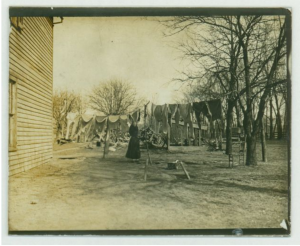While perhaps now best known as an international distress signal, May Day’s origins as a festival to celebrate the coming of spring date back to as early as the 2nd century AD. From the Roman festival Floralia to the Germanic festival of Walpurgis Night to the Celtic festival of Beltane, elements of modern-day May Day can be seen in the feasts, celebrations, and use of flowers as decorations and gifts that originated in those festivals. May Day is currently recognized as an official holiday in 66 countries, and has also been known as International Workers Day since the 19th century as a way of recognizing the 19th century labor movement for workers’ rights.
The most well-known May Day traditions, as observed in Europe and North America and featured in the third book of Maud Hart Lovelace’s Betsy Tacy series, are the crowning of the May Queen, the giving of May baskets, and the dance around the maypole. May Day traditions have fallen out of fashions in the recent decades, but here at the IDHH, we’ve chosen to highlight some of these past May Day celebrations from Western Illinois University, Knox College, the North Suburban Library District, the Towanda District Library, and the University of St. Francis to show how May Day traditions used to be celebrated.





View the full Digital Image Collection, Harold Way Photograph Collection, North Suburban Library District Local History Collection, Towanda Area Historical Collection, and the Sharing Our Past, A Visual History Collection on the IDHH.
View more items related to May Day celebrations on the IDHH.










